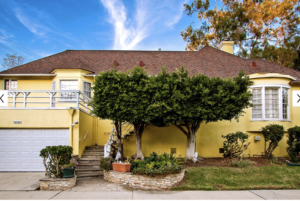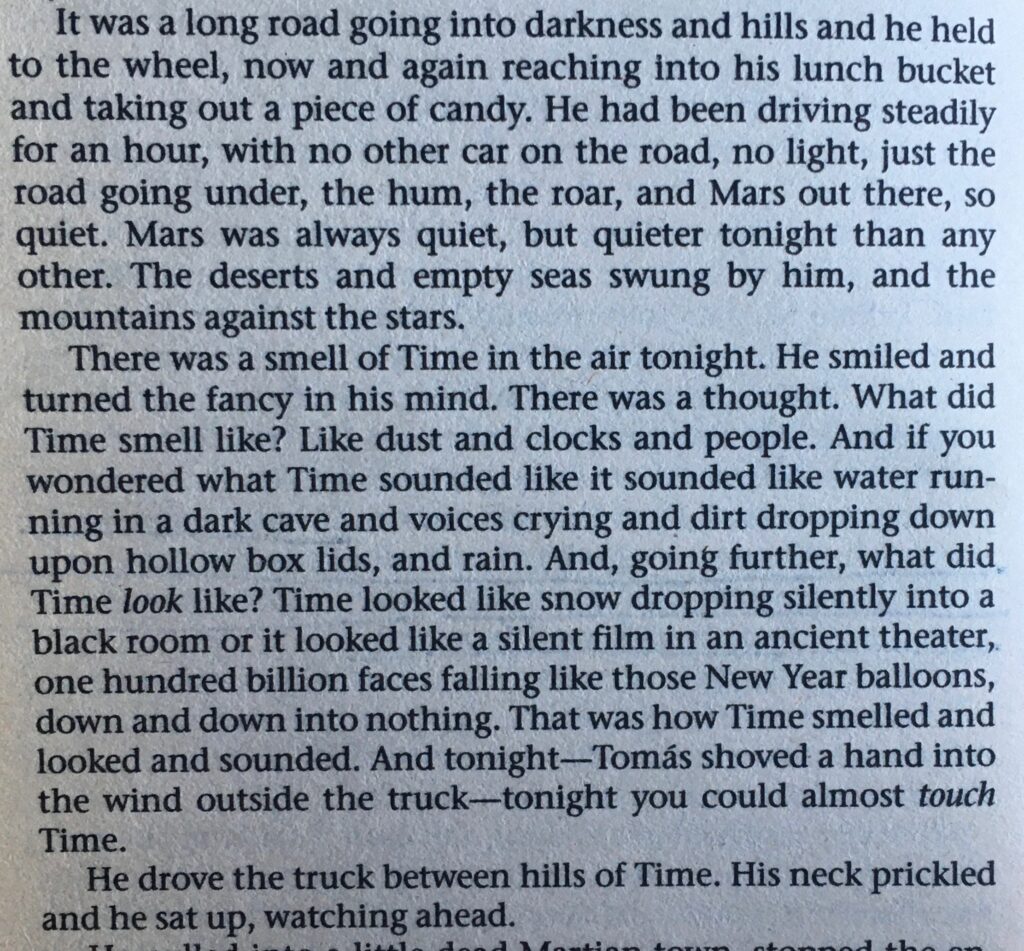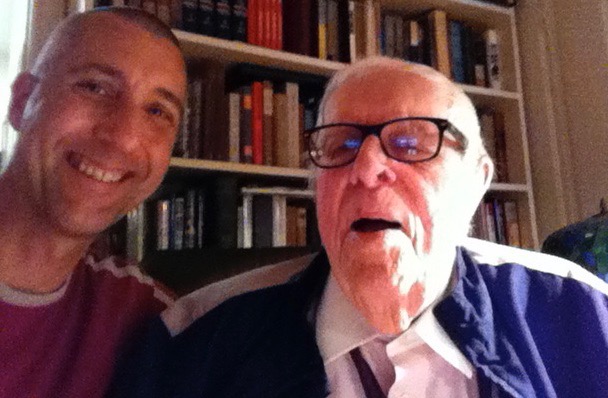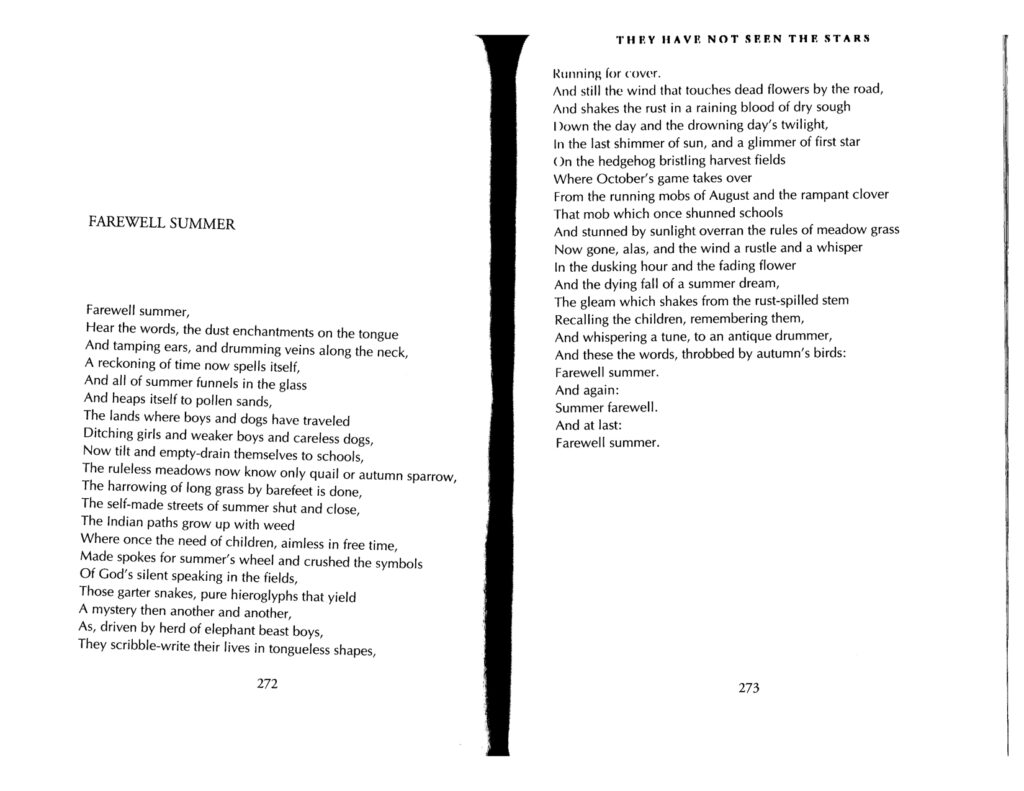Gratitude Story: guitarist John Wunsch
This is one of those stories where a seemingly small choice ends up opening a whole lotta doors.
Late 1980s Greenwich Village, New York City. At the corner of West 3rd and MacDougal there is a progressive jazz and funk club called VISIONES. Margaret and I are walking past on a summer afternoon, and here some beautiful sounds coming out of the open door. A band called C’EST WHAT!? is doing I sound check: bass, drums, midi-enabled-vibes, nylon-string guitar, no vocals, free and fun and deeply musical songs. I’m smitten. At the end of their sound check, I approach the stage: hello guys – your music is fantastic – I’m a composer and would love to work with you… but they are already shaking their heads. No thanks, buddy – all of us are composers, and we only play our own music. OK, fair enough. (The bass player has a TC Electronics chorus/flanger pedal, and plays through these new Hartke aluminum cone speakers – dang, I’ll have to get that same rig somehow…)
As we’re walking out, the guitarist calls out hey, just a sec… no hard feelings – we really do already have more music than we can even rehearse. His name is John Wunsch. What do I play? What am I into? He gives me his phone number and says call me next week and we’ll jam on some Real Book tunes, just for fun.

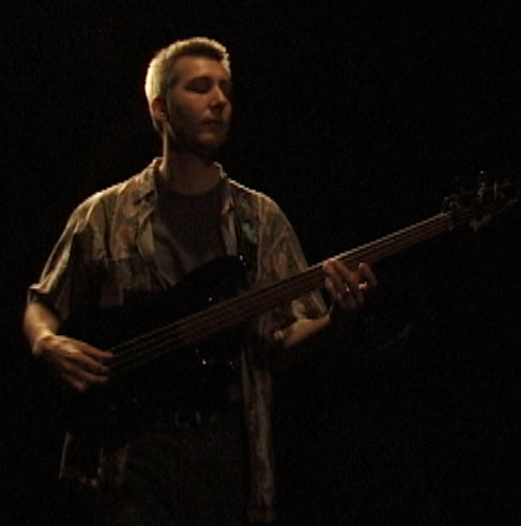 I’m FOB, fresh off the boat from Ohio, and a real actual New York pro musician just asked me over to jam, so I’m going, fretless bass in hand. I am still entertaining the idea that I might be a jazz musician, not just jazz-trained and jazz-influenced. John plays a five-hour nightly classical & flamenco gig at Panchitos Mexican Restaurant on MacDougal on his plug-in-able nylon string guitar – this was hot tech for the time. Our meeting, which turns into many meetings, has to be timed not to overlap his daytime hours with his wife Laura and his no-flexibility GO time at the restaurant. He practices and plays so much that real fingernails would not hold out, so he relies on glued-and-filed nail extensions made from ping-pong balls.
I’m FOB, fresh off the boat from Ohio, and a real actual New York pro musician just asked me over to jam, so I’m going, fretless bass in hand. I am still entertaining the idea that I might be a jazz musician, not just jazz-trained and jazz-influenced. John plays a five-hour nightly classical & flamenco gig at Panchitos Mexican Restaurant on MacDougal on his plug-in-able nylon string guitar – this was hot tech for the time. Our meeting, which turns into many meetings, has to be timed not to overlap his daytime hours with his wife Laura and his no-flexibility GO time at the restaurant. He practices and plays so much that real fingernails would not hold out, so he relies on glued-and-filed nail extensions made from ping-pong balls.
Because he is a soloist so often, he’s gotten really good at chord-melody playing, a challenging technique where the solo guitarist pretends to be two musicians and covers the melody and the chords at the same time. Sometimes the chords are in sync with the melodic notes, like a choir singing together, and other times the chords make a groove or rhythmic counterpoint to the melody. John’s an expert at this. When we play, we pick standards out of the Real Book and see what happens. The presence of a bass frees him up in various ways, chord-melody light. I’m the bass and drums, also made free by all the open musical space that playing in a duo creates. We practice every other week for about a year, get to know and like each other, play some try-out gigs that don’t lead to paying work, and decide to record a live-to-two track demo at Bair Tracks, a small studio in a basement on Ludlow Street near Katz’s Deli that John’s heard good things about.
Here’s what we captured (as YouTube videos):
A year later I’m back at Bair Trax recording original songs, and John pitches in with this beautiful first-take guitar solo:
Soon after that, John and Laura announced their move to Michigan (where they started String-By-Mail). We have a beer-infused boys night out to say goodbye, going from club to club, from funk to blues to piano jazz to 5:00 AM breakfast at the Waverly Diner.
And that might have been the end of the story.
But I was finally ready to form a band to play my songs, and had asked John if he’d play guitar in the band. I think he would have, too, but the Michigan commute wasn’t going to happen. For the Bair Trax sessions John had introduced me to guitarist Gordon Nicol (also on the CLOUDED NOON track) — why not ask Gordon? I did, and he said yes let’s do it. The band Dreams of Flying formed, playing and recording in the Village for about four years. When Gordon needed to drop out of the music scene, he introduced me to Dana Scofidio, who became another close friend and my go-to guitarist ever since for everything from the Doc Wallace Trio to live gigs to pit bands for my musicals and operas.
If not for John, his musicality and insight, forward-moving ideas and matchmaking, none of these projects might ever have happened the way they did.
After John and Laura left the city, I composed A DIFFERENT SKY, and dedicated it to him. As for meaning, the lyric refers to what I saw in John’s relationship with Laura – which was one of the first times I had seen a professional musician in a healthy marriage, proving that such a thing was indeed possible – as well as to my own partnership with Margaret, and the open space and possibility these relationships created: he sees inside her a different sky. The opening image borrows from an episode in a novel that Margaret had written but not published, where a teenage boy floats over a dam-flooded town in a glass-bottom boat of his own construction.
So here you go, John – three different live-to-two-track versions for you, with love and gratitude.
A DIFFERENT SKY (at Cornelia Street with bass clarinetist Bohdan Hilash)
A DIFFERENT SKY (guitar trio with violist David Wallace)
A DIFFERENT SKY (piano trio with Chris Clark and Dan Thress)
A DIFFERENT SKY
(for John Wunsch)
a glass-bottom boat for him to ride in
would carry him to a different sky
he really preferred to ride in airplanes
but didn’t know how the things could fly
spend the summer in a single day
on the bottom of the sea
spend the time that people throw away
they sleep together on sandy pillows
he sees inside her a different sky

